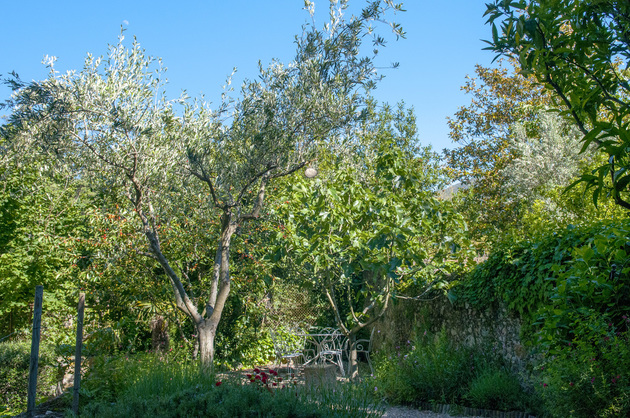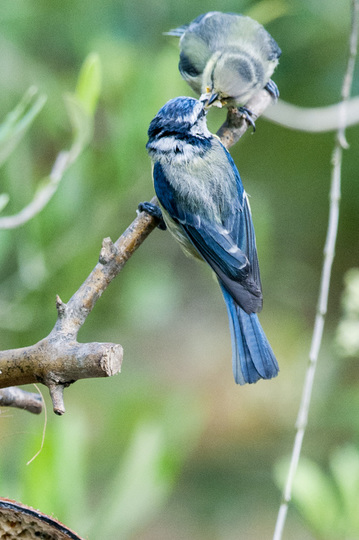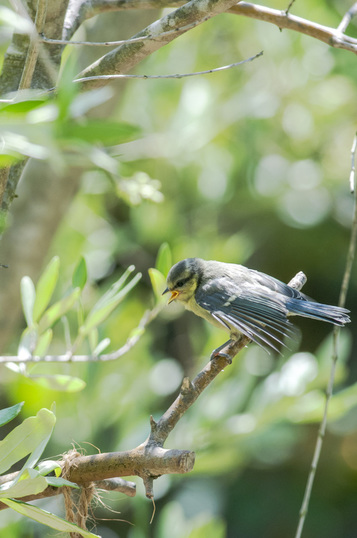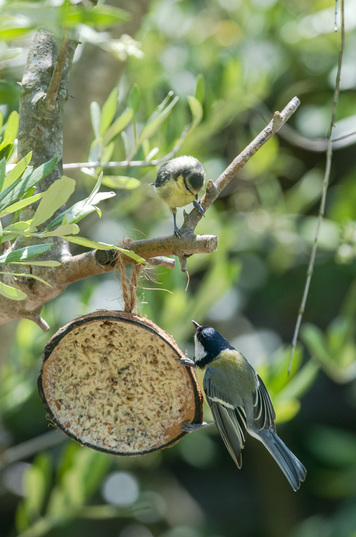
Was it Z Cars? Or Softly Softly? For some reason one episode of a 1970s police TV show has burned its black and white story deep into my memory. It was to do with a missing person, and hinged around a decision that the policeman in charge of the search had to make. Of course we as the viewer, with our twenty twenty vision of the whole story, knew that the woman – it's always a woman – was being held captive behind a wooden door on a little alleyway, very close to where she had last been seen. The first police search of the immediate area proved fruitless, nothing was found. But we had seen a policeman look down that very alleyway, and try that very door. When it didn't open, he shrugged his shoulders and moved on. The fool! The team returned to HQ saying they had searched the area and found nothing. Where should they look next? Broaden the search area? After all, by now the kidnap victim could have been taken much further away. Everything hinged on this next decision. We all expected the big chief to decide to look further afield, but against expectations, and in the way that only a clever TV detective could, he said "no" and instead ordered another, far more thorough search of the same area. And of course as a result the poor victim was found unharmed. There was no particular logic or reasoning to this decision, or at least none that was shared with us, but I like to think that this police chief realised, perhaps, as a diligent student of the human psyche, that the most likely explanation of their lack of initial success was to do with our perception of what surrounds us. Often the thing we are looking for is right under our noses, it's just that most of the time we look so hard for it that we don't actually see it.
I don't know why that police drama of all the many I must have watched has stayed with me. But it often comes to mind, and now that my horizons are somewhat restricted for other reasons, I find it particularly relevant.
Because restricted horizons can, incredibly, make for broader vistas. If you live your life at speed, following a human, 21st Century, digital, "Western" work-eat-sleep timetable, almost to the avoidance of the natural rhythm of the seasons, then although you may be able to do many amazing things, and travel to extraordinary places, you will also miss more. Speeding along a motorway or on a train you may reach your destination more quickly, but you would hardly register passing a particular forest, let alone understand the amazing things that are going on within it - the complex interrelations and interdependences of so much: flowers, fungi, moss and lichens, to say nothing of the trees themselves. Then there are the many insects, animals and birds that may live there. Each one will be growing and changing its appearance constantly with the time of day, the weather, the seasons and in relation to the other living things around it. No day will ever be the same in nature. It's just that most of the time we fail to notice…
And so it is for our small and perhaps rather over-studied garden here in the Alberes! We planted fruit trees – the garden can only be a maximum of 6m wide, and all of 15m long, but we have found room for a mandarine, an olive, a green fig, a bitter cherry and a large old bay tree at the far end, which we have allowed to become overgrown and bushy with ivy and jasmine. In this spot we find ourselves in the very happy situation of being part of a verdant "frontier" between forest and buildings. On one side of our house there's a street, with village houses on either side. These buildings' overhanging terracotta roofs have sheltered generations of swifts, swallows and house martins, laying eggs and rearing their young in nests under the eaves, rebuilt each summer. Some of these houses also form a habitat, in their usefully ramshackle way, that shelters bats, pigeons, redstarts, starlings, small mammals, lizards and geckos.
On the other side of our house we overlook the wild forests of the Alberes, stretching as far as the eye can see. I say "verdant", because this land between man and mountain has been cultivated on a small scale for hundreds of years, possibly thousands, as there is strong evidence of an ancient Roman settlement under the current village. Our garden may be small, but with the addition of a few feeders, it becomes a big draw for the varied birds living all around, be they urban or rural - sparrows, robins, blue & great tits, black redstarts, Sardinian warblers, goldfinches, greenfinches, serins, nuthatches, kestrels, magpies, jays, blackbirds and more. And then there are the many migrating birds that pass through our area each spring and autumn, to say nothing of the summer visitors we hear, even if we see them only rarely: bee eaters, hoopoes and golden orioles.
At the grander end of the scale come the large raptors that patrol the mountains behind us, soaring on thermals, often maddeningly elusive, as they fly way beyond the reach of binoculars and long lenses, and always against an unhelpfully bright sky. Lesley and I often send each other texts when we see them flying above our houses "large raptor at 11 o'clock towards Roc du Midi" sometimes works, but usually by the time it's been tapped out and sent, the bird is long gone!
Occasionally these magnificent predators come tantalisingly close - a week or so ago I glimpsed a short-toed eagle actually carrying a snake as it flew by, and a few years back I saw a hobby flying low over the trees beyond our garden at dusk, re-emerging from its foray among the houses of the village with a bat clearly visible in its talons. I didn't even have to be in the garden - to see these amazing things from my own home, I just had to be alert, watching what was happening outside, being as sensitive as possible to my surroundings, always observing, always listening and knowing, with certainty, that being patient brings its rewards.
The other day, camera set up on a tripod beside me, I was watching the many birds that visit the coconut shell feeders I have put up in the garden. In the good old bad old days I suppose I would have looked at the feeder for a short while, identified each bird that visited it, and maybe photographed it, which would have then scared the bird away. Pretty soon after that, realising that a “trophy bird” like the golden oriole was unlikely to visit, I would probably have got bored and moved on to the next thing. But now that's not possible, so as I was hidden from view and the camera was set up, I observed all those visitors equally, and with a new wonder, letting the camera do the recording work for me and leaving any difficult identifications for later on screen. Which left me free to observe. Really observe. There are at least four blue tits that come to feed, two pairs that look and behave very differently. One pair are absolutely stunning, with bright coloured, very smart plumage. They look young, beautiful and very much “together.” Until recently they've been bonding by feeding each other in the olive tree, but now I suspect they are both parents, as they take most food away with them from their visits. I call them Mr & Mrs Waitrose, because I suspect that that's where they would shop!
Meantime the other pair could not look more different. Their plumage is rather ragged looking, as if they haven't quite had time to fix their make-up before heading outside, and their visits to the feeder are very brief. They rarely pause to eat themselves, instead they rush away, looking hassled, with beaks full of dried mealworms and suet. They could be about to moult, but then again surely one pair of birds would be unlikely to be so out of step with the other...? As most moults are seasonal, and timed to coincide with periods of less strenuous activity (after nesting and before migration) this seems a very unlikely explanation, so what then is causing this difference? Perhaps the smarter pair are ahead of the others, having moulted much earlier into their new plumage, they are now well on their way to raising their first brood. This question was partly answered whilst observing the feeder a few days back, when I realised that Mr or Mrs Waitrose was feeding another blue tit perched on the branch above the feeder. It was only later when I looked at the photographs that I found this – a fully fledged young blue tit demanding food from a now slightly more hassled looking parent. So perhaps the pair I'd seen with the more ragged plumage were actually ahead of the game, having to cope with the demands of parenthood before that lifestage hit the Waitroses. Mind you, this youngster got his or her comeuppance a few days later, when s/he spotted to her horror that the bird on the feeder from whom s/he was demanding food was a very smart, and much larger great tit, which I also managed to catch!*
* Postscript: Great news! Today (30th May) I have just seen two fledgling blue tits on the feeder together (showing me more than a hint of encouraging sibling rivalry) and feeding in the cherry tree as well.


